Define the following term:
Organelle
"small organs"; are the metabolic machinery of the cell, and that are highly organized to carry out specific functions for the cell as a whole.
Define the following term:
Cell
the structural and functional unit of all living things, is a complete entity.
Although cells have differences that reflect their specific functions in the body, what functions do they have in common?
Growing, reproducing, and responding to a stimulus are common functioning characteristics amongst all cells. In addition, all cells can maintain their boundaries, metabolize, digest nutrients, and dispose wastes
Plasma membrane
external boundary of cell; regulates flow of materials into and out of the cell; site of cell signaling
Lysosome
contains digestive enzymes of many varieties; "suicide sac' of the cell
mitochondria
scattered throughout the cell; major site of ATP synthesis
Microvilli
slender extensions of the plasma membrane that increase its surface area
Inclusions
stored glycogen granules, crystals, pigments, and so on
Golgi apparatus
membranous system consisting of flattened sacs and vesicles; packages protein for export
Nucleus
control center of the cell; necessary for cell division and cell life
Centrioles
two rod-shaped bodies near the nucleus; direct formation of the mitotic spindle
Nucleolus
dense, darkly staining nuclear body; packaging site for ribosomes
Microfilaments
contractile elements of the cytoskeleton
Rough ER or endroplasmic reticulum
membranous system; involved in intracellular transport of proteins and synthesis of membrane lipids
Ribosomes
attached to membrane systems or scattered in the cytoplasm; synthesize proteins
Chromatin or Chromatin threads
threadlike structure in the nucleus; contain genetic material (DNA)
peroxisome
site of free radical detoxification
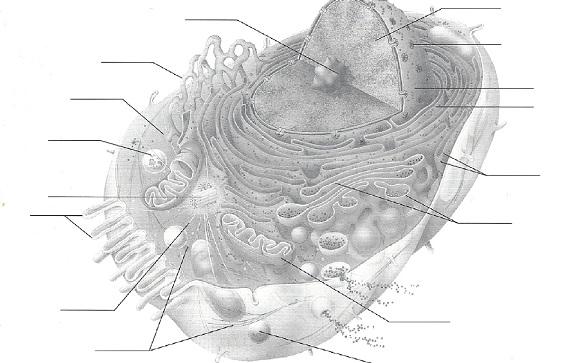
In the following diagram, label all parts provided with a leader line.
I broke the picture down cause it was not big enough to fit, they are in the following slide...
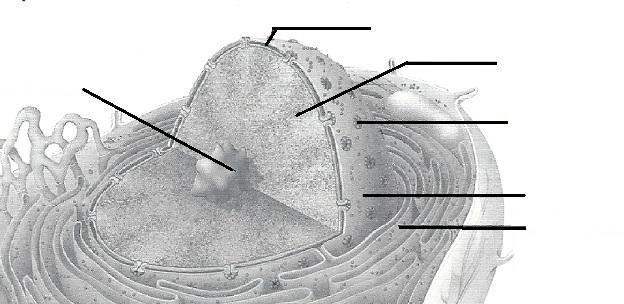
PUT YOUR MOUSE OVER IMAGE TO ENLARGE
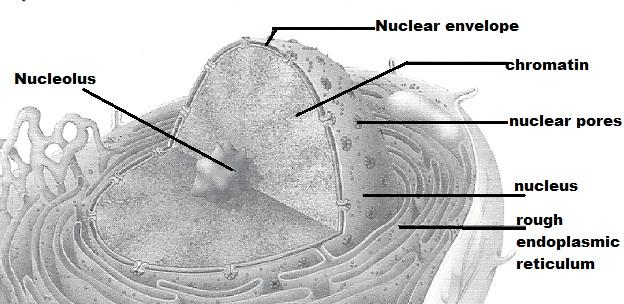
PUT YOUR MOUSE OVER IMAGE TO ENLARGE
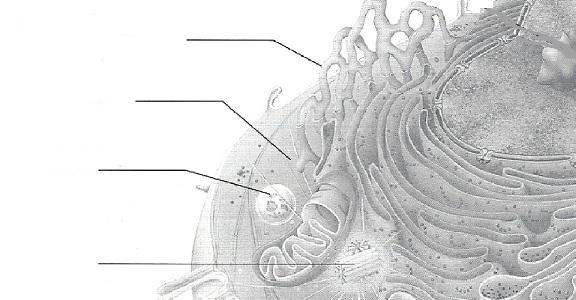
PUT YOUR MOUSE OVER IMAGE TO ENLARGE
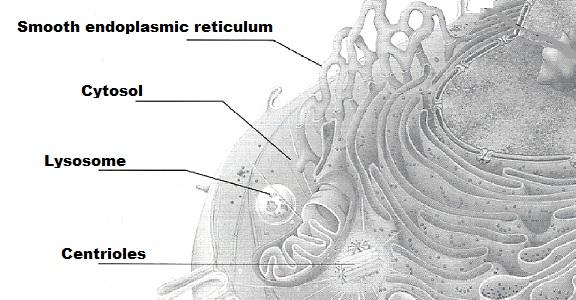
PUT YOUR MOUSE OVER IMAGE TO ENLARGE
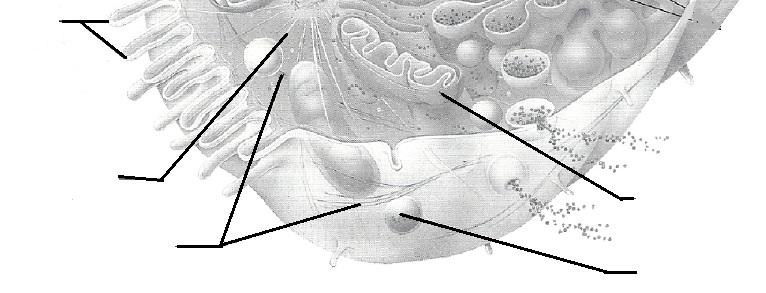
PUT YOUR MOUSE OVER IMAGE TO ENLARGE
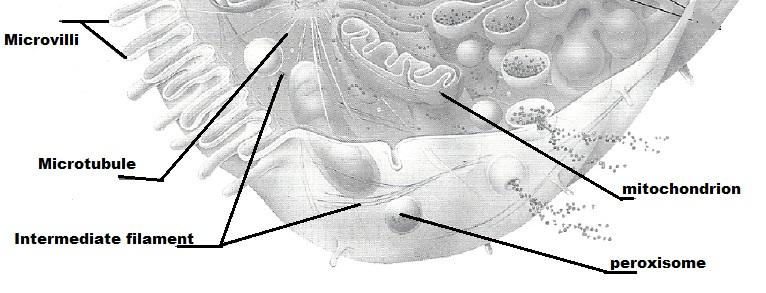
PUT YOUR MOUSE OVER IMAGE TO ENLARGE
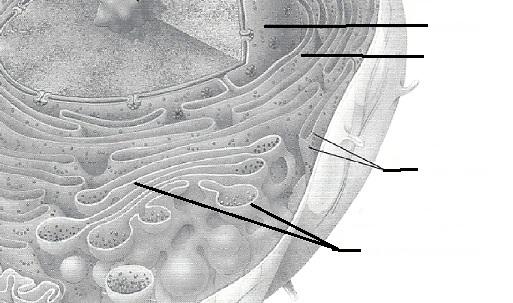
PUT YOUR MOUSE OVER IMAGE TO ENLARGE
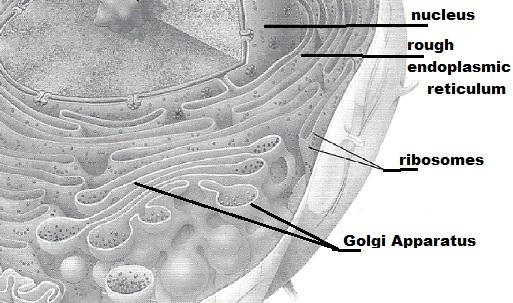
PUT YOUR MOUSE OVER IMAGE TO ENLARGE
For each of the following cell types, list (a) one important structural characteristic observed in the laboratory, and (b) the function that the structure complements or ensures.
squamous epithelium
a.__________________________________________
b.__________________________________________
squamous epithelium tissue-
a) flat shaped
b) good for layering and overlapping.
For each of the following cell types, list (a) one important structural characteristic observed in the laboratory, and (b) the function that the structure complements or ensures.
sperm
a.______________________________________________
b.______________________________________________
sperm-
a) flagella
b) allows the cell to be mobile
For each of the following cell types, list (a) one important structural characteristic observed in the laboratory, and (b) the function that the structure complements or ensures.
smooth muscle
a.________________________________________________
b.________________________________________________
smooth muscle-
a) has a fusiform shape
b) allows the muscle to tense and relax.
For each of the following cell types, list (a) one important structural characteristic observed in the laboratory, and (b) the function that the structure complements or ensures.
red blood cells
a._______________________________________________
b._______________________________________________
red blood cells-
a) biconcave shape
b) allows more surface area for efficient gas transfer.
What is the significance of the red blood cell being anucleate (without a nucleus)?
The red blood cell(rbc) does not have a nucleus. The lack of a nucleus enables the rbc to have more room to contain haemoglobin which increases its efficiency to carrying oxygen.
Red Blood Cell:
Did it ever have a nucleus? If so, when?
They did have a nucleus . When they are formed in the bone-marrow, they contain a nucleus, but when the become mature it is replaced by haemoglobin in order to carry more oxygen.
Of the four cells observed microscopically (squamous epithelial cells, red blood cells, smooth muscle cells, and sperm) which has the smallest diameter? ________ Which is longest? _________
smallest: RBC
Longest: smooth muscle cell
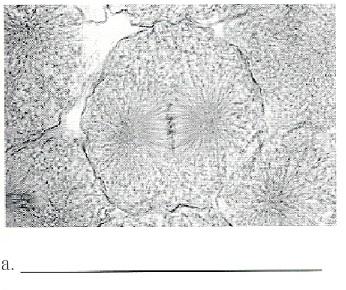
Identify the phase of mitosis in the following photomicrograph.
METAPHASE
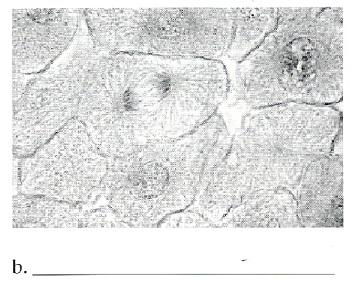
Identify the phase of mitosis in the following photomicrograph.
ANAPHASE
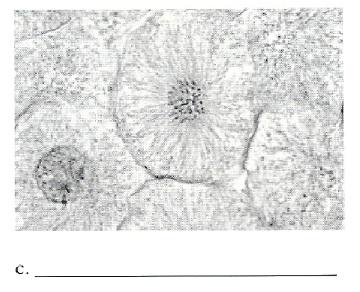
Identify the phase of mitosis in the following photomicrograph.
PROPHASE
What is the importance of mitotic cell division?
The importance of mitotic cell division is to make a greater amount of cells for repair and growth while maintaining the same genetic makeup
Division of the __1__ is referred to as mitosis. Cytokinesis is division of the __2__. The major structural difference between chromatin and chromosomes is that the latter are __3__. Chromosomes attach to the spindle fibers by undivided structures called __4__.
1. Nucleus
2. Cytoplasm
3. Coiled/Condensed/Shortened
4. Centromeres
If a cell undergoes mitosis but not cytokinesis, the product is __5__. The structure that acts as a scaffolding for chromosomal attachment and movement is called the __6__. __7__ is the period of cell life when the cell is not involved in division. Two cell populations in the body that do not routinely undergo cell division are __8__ and __9__.
5. A binucleate cell or multinucleated cell
6. Spindle
7. Interphase
8. Skeletal
9. Cardiac
prophase
Chromatin coils and condenses, forming chromosomes.
anaphase
The chromosomes are v-shaped.
telophase
The nuclear envelope re-forms.
telophase
Chromosomes stop moving toward the poles.
metaphase
Chromosomes line up in the center of the cell.
prophase
The nuclear envelope fragments.
prophase
The mitotic spindle forms.
interphase
DNA synthesis occurs.
interphase
Centrioles replicate.
prophase
Chromosomes first appear to be duplex structures.
prophase
Chromosomal centromeres are attached to the kinetochore fibers.
metaphase
Cleavage furrow forms.
metaphase and anaphase
The nuclear envelope is absent.
What is the physical advantage of the chromatin coiling and condensing to form short chromosomes at the onset of mitosis?
Short, compact bodies easier to manipulate during mitosis rather than long, thin chromatin threads.